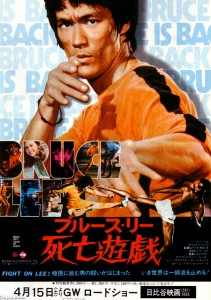
“Game of Death” Japanese Theatrical Poster
Director: Robert Clouse
Cast: Bruce Lee, Kim Tai-chung, Kareem Abdul-Jabbar, Colleen Camp, Gig Young, Dean Jagger, Sammo Hung, Bob Wall, Mel Novak, Hugh O’Brian, James Tien, Roy Chiao, Hon Tsoi Chi, Casanova Wong, Billy McGill
Running Time: 92 min.
By Joseph Kuby
At best, this is a quintessential example of a good/bad movie. Brandon Lee was said to have hated this film with a passion! It’s funny, because even with the original footage, I don’t like Game of Death as much as the sequel. I guess it’s just standards with the foresight of knowing that if Bruce lived it would have been better.
But that’s not the only thing. There’s something about Game of Death that always projects bad vibes – maybe it’s the foreshadowing of Brandon’s death, the dark atmosphere or the dull direction. Also, it made Bruce look like a weak fighter whereas the sequel plays to the myth (and legend) of Bruce being a master fighter who never gets hurt and fails to lose fights.
The sequel also has a nice lighthearted feel to it. The sequel seems less exploitational. I never liked all of those shots of Bruce Lee’s funeral in the predecessor. Also, it’s plain obvious that the old footage doesn’t work with the new footage, particularly when it becomes obvious during the finale that Bruce is fighting at daytime than night-time. I suppose they did their best given the resources and circumstances.
Is it just me or does the final duel between Billy Lo and Carl Miller look a bit slip-shod? I don’t mean the editing of the footage but of the audio. After When Bob Wall says “Christ…”, we cut to a shot of Bruce Lee from Way of the Dragon where the dialogue continues albeit in a different voice “… Billy Lo”; it feels like they took that bit from the trailer or something i.e. “Bruce Lee as… Billy Lo!”
What’s even funnier is that whilst future filmmakers would depict the catsuit as being a shiny yellow catsuit, it’s clear (when looking at behind the scenes pictures and the Curse of the Dragon documentary) that it’s really a light orange catsuit. It’s more of a dark yellow catsuit, if anything remotely yellow. Maybe the perception of it being a strong yellow catsuit was due to the way the film print was preserved.
The Spanish title for Game of Death is Juego Con La Muerte (Game with the Death), whilst the French title is Le Jeu De La Mort (Play of Death).
After the success of Bruce Lee: The Man, The Myth, Ho Chung Tao was approached by Golden Harvest to play the role of Billy Lo in the official version of Game of Death. Offering to cancel all of his prior commitments, Chung Tao was anxious to do his best to commemorate Bruce Lee. When confronted with the concept that two other actors would join him in the role in an attempt (yet again) to fool the audience, Ho ultimately and quite nobly refused to be associated with the project.
But I don’t think even Ho Chung Tao would have made much difference to Clouse’s “vision” as it were, though it would been a sight to see how he would have coped with Sammo’s ever-so-demanding high standards for excellent fight choreography.
At the time of its production, Game of Death was the most expensive film Golden Harvest had yet undertaken to make (i.e. without production financing from a Western company, instead Columbia Pictures focused on distribution). The film’s budget was HK$ 4.5 million (US$ 580,465). In Hong Kong, the film made HK$ 3,436,169 (US$ 443,245). It actually made more money in Hong Kong than Enter the Dragon did, which made HK$ 3,307,526 (US$ 426,650).
At one point during the planning of Game of Death, Golden Harvest approached both Steve McQueen and James Coburn to appear and later contacted Muhammad Ali and the Brazilian football star Pele! In the promotional material for the film, Robert Clouse is quoted as saying “This electrically charged film contains the most spectacular footage of the Chinese-American superstar ever filmed. It is, we feel, a fitting memorial to Bruce Lee.”
Despite the hack job which Bruce’s uncompleted project was given, the film was actually a bigger hit in Japan than Enter the Dragon was and the box office revenue elsewhere equalled that generated by Enter the Dragon (basically making more than US$ 200 million) since by the late 1970s audiences were so desperate to see any ‘new’ Bruce Lee footage.
On the subject matter of footage, my personal theory concerning the making of Game of Death has always been that Bruce Lee had shot the planned fight scene with Whang Inn Sik for this film (i.e. the one where Bruce and Co. enter the first floor of the pagoda after taking out Bolo and his karatekas).
Think about it, Whang was already in Hong Kong making Hapkido and The Way of the Dragon back to back. So it’s likely he would have been working on Fist of Unicorn and Game of Death back to back as Bruce would have been keen to enlist his talents as soon as possible in case Whang was besieged with offers thus making the project even more delayed. The reason why the footage may not have been used in Clouse’s take of the film is because it would have been even harder to obscure Sammo, James Tien, Chieh Yuan and the fourth assistant. The reason why the footage may not have been included in John Little’s take is that there wouldn’t be much consistency since Taky Kimura never shot (much less completed) his scene as the preying mantis exponent guarding the second floor and also if you think about the positioning of the staircase from floor to floor, thus the transition between Bruce and the actor they used to fill in his shoes would have been more haphazard and inconsistent.
As to why people might not have known about it until now, one has to remember that for a long time in Hong Kong nobody (i.e. the audience) was aware that Bruce had shot the scene with Chi Hon Joi (though in some Asian territories it was seen halfway through the film), so it’s more likely that no-one up to this point of time would have been aware of the Whang fight. Especially seeing as how it would have been difficult to use that scene hence why no publicity has circulated regarding its existence. But then again this is just me entertaining a thought or a suggestion rather than proclaiming fact.
Having mentioned both Chi and Hwang, Chi was the classmate of Bong Soo Han (fight choreographer of Billy Jack and stunt double, in said film, for Tom Laughlin – the latter of whom had his scenes deleted in the John Wayne/Richard Attenborough crime thriller, Brannigan). Whang appeared in Bruce Lee and I at Chi’s behest since Chi’s formidable reputation in Hong Kong at that time was veritable. Chi had a role in Bruce Lee and I as the guy who lifts him in the air with a staff. Disregarding common belief that the relationship between Lee and Chi was strictly professional, they were actually good friends prior to the making of Game of Death. Lee even suggested Chi’s services to the makers of Fist of Unicorn. However, it has been said that Chi had experienced Bruce actually hitting him at times, something that also annoyed Shek Kien, as, he too, was on the receiving end while filming Enter the Dragon.
For the time, this film features some fairly famous faces which brings to mind another thing which makes Bruceploitation movies watchable – for a questionable sub-genre, Bruceploitation sure knows how to grab talent whether it be Jane Seymour (Dr. Quinn Medicine Woman), Jack Klugman (Quincy) or Morgan Fairchild (who played Nora Tyler Bing in Friends). Although it is doubtful that these celebrities, even to this day, realized that they were in the middle of a Bruceploitation picture (in the case of the three celebrities just mentioned – they appeared in Challenge of the Tiger, which starred Bruce Le, Hwang Jang Lee, Bolo Yeung and gwailo ninja star Richard Harrison).
Then there’s the performers who resemble famous celebrities e.g. in the film Enter the Game of Death, one of the Western villains looks a lot like British comedian Jimmy Carr. Even when it comes to dubbing talent, there’s voices you’d swear belonged to someone famous or recognizable e.g. Lung Fei’s English dubbed voice in Goodbye Bruce Lee: His Last Game of Death sounds a lot like a young Jonathan Frakes (in said film, the guy who does the voice for James Ho sounds like John Demita – the guy who does the voice for Jet Li in practically every English language version of his films).
This is actually the second time Gig Young and Dan Inosanto appeared in a film together as their earlier effort was a martial arts action movie made by Sam Peckinpah called The Killer Elite, which starred James Caan, Robert Duvall, Bo Hopkins and Mako.
Another interesting point to make is that Tiana Alexandra appeared in The Killer Elite as well, the relevant significance being that she was the only woman to be personally trained by Bruce Lee. Tiana considers herself the female equivalent of Bruce Lee. In 1987 she starred with Rod Steiger in the movie Catch the Heat which was written by Bruce’s writer/friend Sterling Silliphant. This is perhaps the peak of her career as an actress. She released some music videos in France in the mid 1980s under the name Tiana Banana for Warner France and did something similar to what Billy Blanks did with his Tae Bo exercise videos, by releasing a self-defense/exercise program called Karatix.
Actually with The Killer Elite, Sam Peckinpah showed a great aptitude for directing martial arts flicks and it would have been interesting and promising to have seen him as the director for American/Non Asian martial arts movies, in particular Game of Death would have been handled by a far more slicker hand of professionalism and a keen ear for dialogue (one has to remember that Robert Clouse was almost completely deaf and he employed assistant directors who could verify that actors had delivered their lines correctly, leaving Clouse to be a director who worked mainly in the visuals of cinema though he has been described as hard-working).
Anyway, Game of Death is only watchable thanks to the Bond-esque opening credit sequence, stellar performance of Hugh O’Brian, the first-rate choreography of Sammo Hung and a suitable fash-paced reworking of Bruce’s original finale which is backed up by an excellent score which rouses the emotions.
Now if only the filmmakers of the recently developed CGI Bruce Lee movie were to dedicate their time and money to complete Game of Death and recreate the actors in the original movie (e.g. the way James Tien would have looked back in 73) ala The Crow alas this might not be the case, which makes the project pointless given that seeing a CGI Bruce Lee movie won’t contain any merit besides seeing how good the special effects are.
Interesting Trivia:
* In the original script for Game of Death (that involved Bruce’s sister and little brother being kidnapped by a malicious boss in order to get Lee’s character to take part in the raid on the pagoda), Nora Miao would play the role of Bruce’s sister.
* Sammo Hung was originally going to be play Chieh Yuan’s part in Game of Death until Bruce finally opted to have Sammo play one of the other four accomplices.
* Comic actor Lee Kun (stocky funny guy from Big Boss and Fist of Fury) was to be another accomplice of Lee’s for Game of Death, but not as one of the four accomplices assisting Lee for combat. His character is chosen for the mission because he’s cheap, an alcoholic and a petty thief as well as a master locksmith, who would pick the lock to the temple to allow the martial artists inside. The character would not join the other members of the team, instead staying down below as lookout. Kareem’s name was Mantis (contextually it makes sense when thinking about that scene in Enter the Dragon with the little mantis overpowering the big one).
* Paul Li, a Bruce Lee historian in Hong Kong, relayed to John Little that Lee had told someone in the Hong Kong press that when his character reached the bottom of the pagoda, he would have his exit way obstructed by a Wing Chun practitioner who assumed the tong sao position. Lee would then draw himself together and fix the man with a deadly stare, causing the man to stumble backward in fear, trip and fall. Bruce would then roll his eyes and leave the pagoda.
* Before deciding on using Whang Inn Sik for Game of Death for the master of the kicking style (this is before he decided whether it should be Karate or Taekwondo), Bruce had planned to approach other similar stylists such as Bob Wall, Chuck Norris and the top Taekwondo practitioner Jhoon Rhee.
* When Bruce flew in Chi Hon Joi (a seventh-degree black belt in Hapkido), over from Korea, he was disappointed with the caliber of the man’s performance. While filming their scene, the Korean had a rigourous enough time of it to comment that he did not want to act in any more movies with Bruce Lee. Bruce considered using an alternative Hapkido exponent, Angela Mao (Lee’s sister in Enter the Dragon) of whom (coincidentally) did a film called Hapkido co-starring Sammo (who was in ETD) and Whang Inn Sik).
In hindsight of Bruce’s script-notes that were filmed for his version of GOD, it’s easy to see how he re-wrote it to work regardless of who was the Hapkido practitioner i.e. the complex, universal and multi-layered symbolism that Bruce Lee intended works regardless of gender e.g. the combination of the red light (think of The Police/Sting song Roxanne) and the bed on the 3rd floor indicating the fact that Angela is a hooker and considering the idea of the finale being a prolonged fight sequence – the old adage “if you can’t beat them, join them” springs to mind when we see the three remaining protagonists enter the fray and notice the female Hapkido expert rise from the bed.
Also, seeing Bruce and James frown upon Chieh in a patronizing shameful manner implys that not only is Chieh Yuan too stiff with his tradition but he just got his ass handed over to him by a woman. Of course, if you read further into it, seeing Chieh Yuan and James Tien run up the stairs suggests that they don’t see why they should wait around and be slugged around because of a woman thus their early demise – highlighting that man’s ability to overcome bias against sex is their own downfall.
* The final message behind Game of Death:
A lot of people tend to be disappointed that Bruce didn’t climb proceed to the top of the pagoda to get the treasure. In Bruce’s scripts for The Silent Flute and Southern Fist, Northern Leg, when the hero finally overcomes his tests and arrives at his goal, he rejects it and leaves, having obtained internally the insight of what is truly valuable: life itself, a treasure of far greater value than the one he was pursuing. Similarly, in the final footage that Lee shot for Game of Death, when the hero finally overcomes the last obstacle to his goal, instead of climbing the final set of stairs to retrieve the prize, he no longer pursues it. Something about his trial caused him to become awakened to a higher truth. He turns and descends the stairs, exiting the pagoda to return to the world, an enlightened and wiser human being. Another interpretation is that often the object you are pursuing is not as important as you think it is; however, the journey is worth taking, the energy is worth expending, because during the course of your quest you just may catch a glimpse of something of far greater worth than the task at hand.
The external quest for which you are striving is not the meaning of your life; you are not your job, you are not your bank account, you are not your trophies. The quest to discover your true self is, ultimately, the greatest adventure in which you can take part and the most fufilling one in all of life. Money, fame, prestige, position, standing, honour – these are not the important things. They hold no intrinsic worth. Seeking those things is significant only if they present you with an opportunity to take part in your own hero’s journey and to realize what is and is not truly important. In Game of Death, the treasure at the top of the pagoda proved to be, in the final analysis, only one more of life’s distractions. The real treasure lay within the soul of Lee’s character. The point being: are you going to be distracted all your life or are you going to live your life fully in the moment? Whatever you think is so great in the future pales in comparison with what is so great right now. The secret that some people never get is that it doesn’t matter what’s at the top of the “pagoda”.
If you are disappointed that Bruce Lee’s character didn’t proceed to the top of the pagoda to get the treasure, you needn’t be, because he understood what’s at the top of every pagoda (figurarively speaking): enlightenment. And so the deeper meaning of Game of Death is the eternal conflict of ascending in one’s own consciousness. And the metaphor that Bruce utilizes to convey this message is the notion of styles in the martial arts. The final level of the pagoda can be seen to represent man’s greatest obstacle: his ego or excessive sense of self-consciousness, which is what causes suffering and fear – the one thing seperating man from connecting in a deeper sense with the rest of the world. This lesson, being fully alive in the moment, is the real treasure the hero had been seeking all along, but it had taken a physical, bodily pursuit to awaken this realization. As Lee once told his student Daniel Lee, “What man has to get over is the consciousness of himself.” This was actually the same lesson he would discuss with the wise old monk in ETD when he said, “There is no opponent because the word I does not exist”.
Joseph Kuby’s Rating: 7/10
By Joe909
This weekend I had the misfortune of watching this whole movie, the first time I’d watched it all in about 6 years. Like most people, usually I just watch the actual Bruce footage at the end, and skip everything in between. But my roommate and I were up for some punishment and sat through the movie. Here’s some funny things I noticed that may help you get through your next viewing:
1. How smashed Gig Young is throughout the movie. The guy was obviously tanked on something during shooting. Notice his occasional slurring of lines, especially any scene in which he’s on the telephone. Sadly, I read on the Internet Movie Database that Young killed himself in ’78, as well as his wife. Notice that the year of his suicide was 1978, the same year GOD was released to the world…coincidence?
2. Dean Jagger. The poor man seems almost senile, like he’s not very sure where he is. I love the way he screams his lines, especially when he yells “Kill! CARL!!” During the Bob Wall/Sammo fight. Even though he appears to be at death’s door in this movie, Jagger amazingly lived another 13 years.
3. Speaking of Bob Wall, I love that expression on his face in the locker room fight, after the fake Bruce knocks him on his behind. Bob’s mouth is hanging open and he blinks a couple of times in shock, looking like he’s just had the greatest sexual experience of his life and it’s blown his mind.
4. The thugs in this movie are even less threatening than those in Way of the Dragon. That sounds impossible, doesn’t it?
5. The stand-in for Kareem is also hilarious. The guy looks like he’s barely over 6 feet.
6. Notice how that even though this is Hong Kong, every main character in the film save for the fake Bruce is a white American. White Americans controlling a crime ring in Hong Kong, white American staff reporters for Hong Kong papers, etc. Just like real life, huh?
7. The ineffectual assassin “Stick.” Watch how he “perfectly” blends in with the extras and stagehands on the set of the Fist of Fury rip-off, in which the fake Bruce rushes the cameras and is shot (in the cheek?) by Stick. As if the people on the set wouldn’t notice some sneaky-looking stranger with shifty eyes, dressed in the classic mafia get-up, carrying a revolver.
8. Four words: “You lose, Carl Miller!”
It’s a shame Game of Death is so bad, especially considering that the final ten minutes, with the actual Bruce Lee in scenes that he shot for the REAL Game of Death, contain some of the best martial arts footage ever seen on film. Bruce just looks cooler than cool, in that yellow and black getup, almost like a living Hanna-Barbera cartoon character. No one knows how much of Game of Death Bruce actually completed, however there is at least 30 minute’s worth, all of which will be seen in the soon-to-be-released documentary Warrior’s Journey. So keep your eyes peeled for that: Game of Death looked like it would have been Bruce’s best movie yet, so it will be great to finally see it in the way he intended it to be seen, and NOT full of cut-rate B actors and beard-wearing imposters.
Joe909’s Rating: 4/10 for the movie, 10/10 for the ending fights with the actual Bruce Lee
By James H.
Shameful. Disgraceful. The tainting of a legend. This is how I would describe Robert Clouse’s 1978 film “Game of Death” starring the late Bruce Lee. This piece of celluloid rubbish was released five years after Lee’s untimely death. One must wonder how the producers could get away with making such a disrespectful film.
They credit Bruce Lee as Billy Lo, when in reality Bruce Lee himself was in it for only 20 minutes or so. As far as I can figure, they got five or six imposters to play the part. Some were not even look-a-likes, they were wearing hats and sunglasses, or were bandaged up. How could this get worse, you ask? How about a still picture of Lee’s head (poorly) superimposed over top of someone else’s? Yeah, that would do it.
In addition to all of this, they turn Lee’s original (and somewhat better) story into a cliched and contrived story about extorting money from a movie star. Good thing screenwriter Jan Spears hasn’t worked since “Game of Death”.
The only, and I mean only, saving grace of this film is the footage of the actual Bruce Lee fighting Danny Inosanto and Kareem Abdul-Jabbar. They are very well choreographed and executed, but even they cannot save this film from the trash bin.
James H’s Rating: 3/10



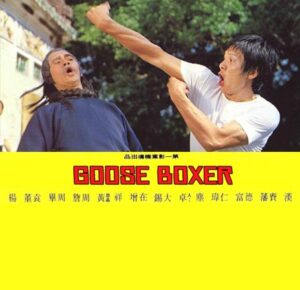
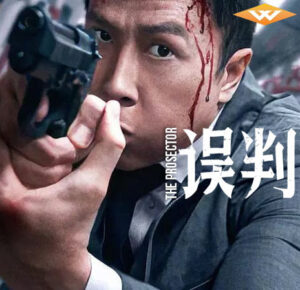
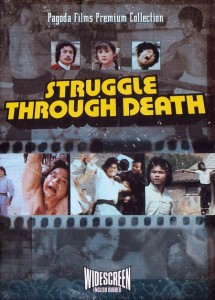
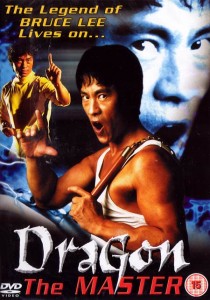
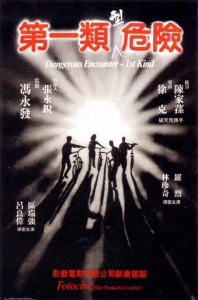
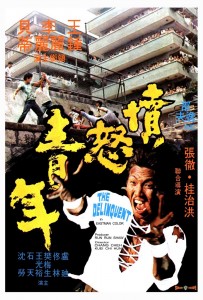
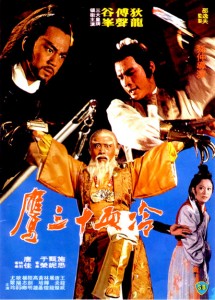
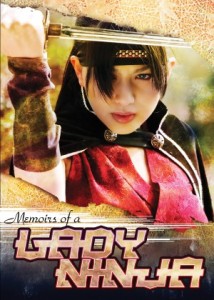
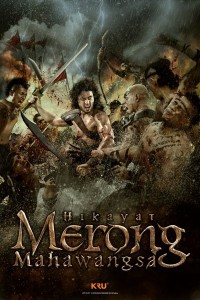
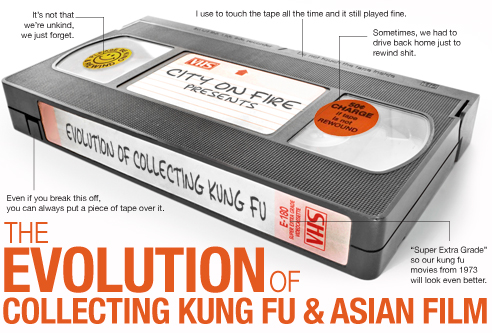 With the infinite amount of websites, eBay, and other online retailers; Asian/kung fu movie fanatics have it really good these days. Especially for the crowd who take advantage of bootlegs, DVD-R swapping and those sneaky forms of file sharing.
With the infinite amount of websites, eBay, and other online retailers; Asian/kung fu movie fanatics have it really good these days. Especially for the crowd who take advantage of bootlegs, DVD-R swapping and those sneaky forms of file sharing.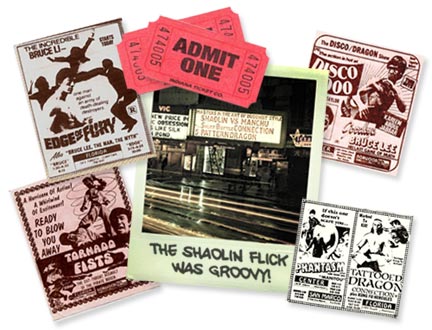
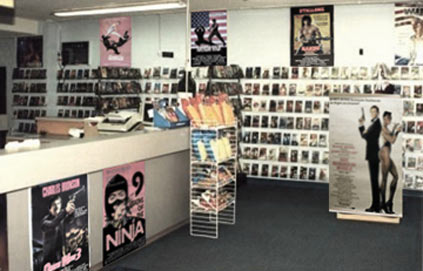

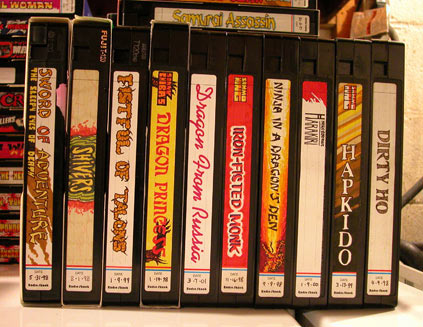
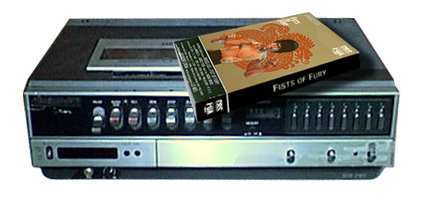
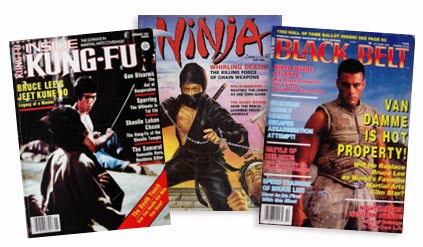
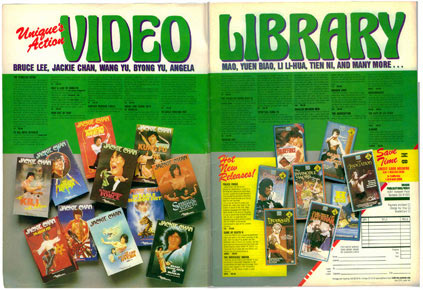
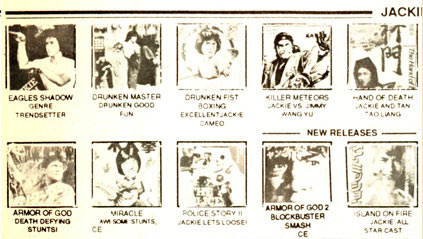
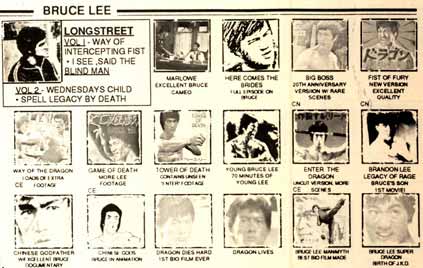
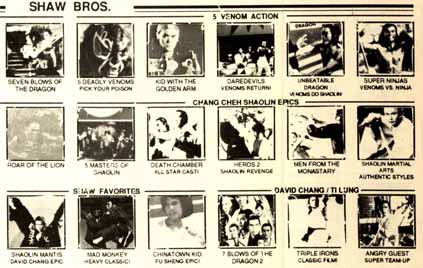
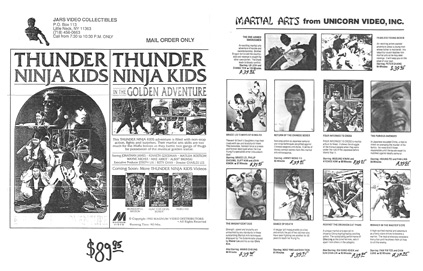
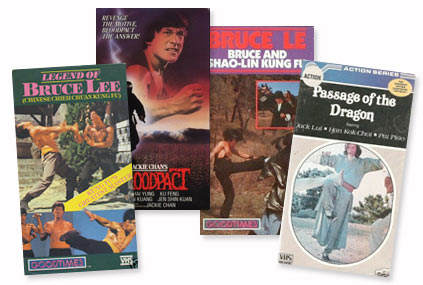
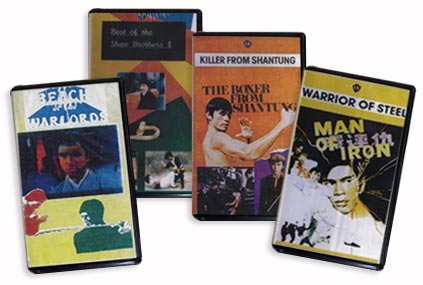
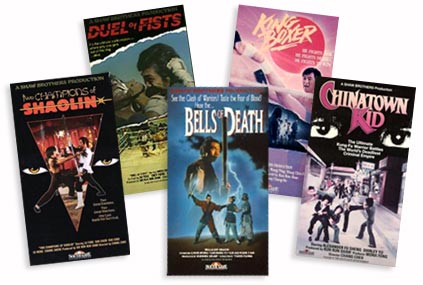
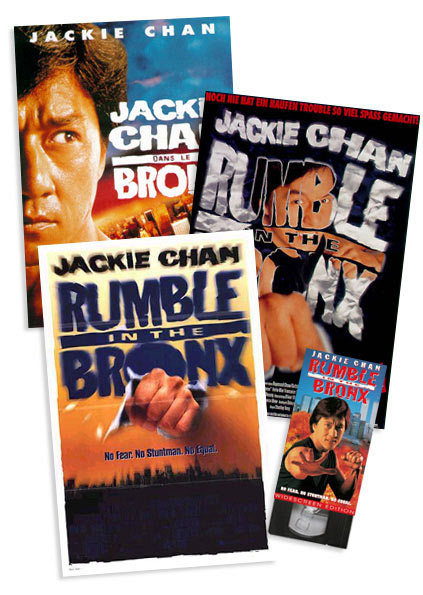
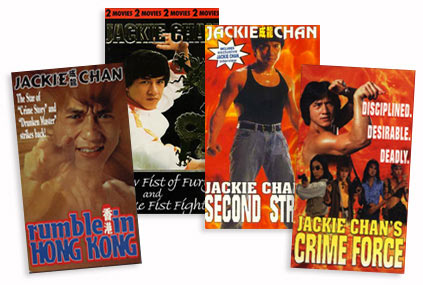
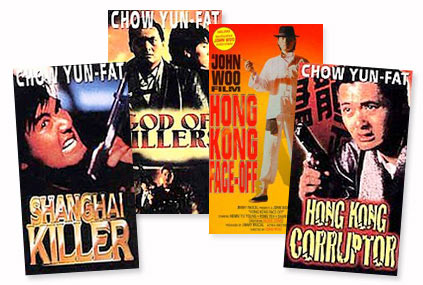
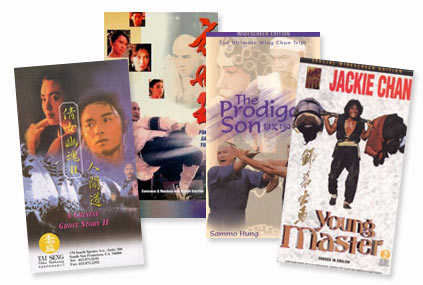
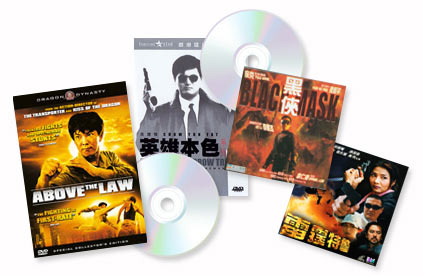
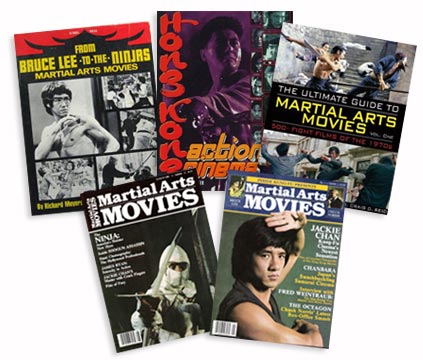
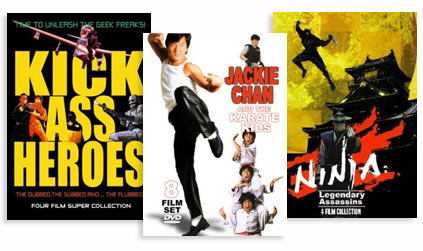
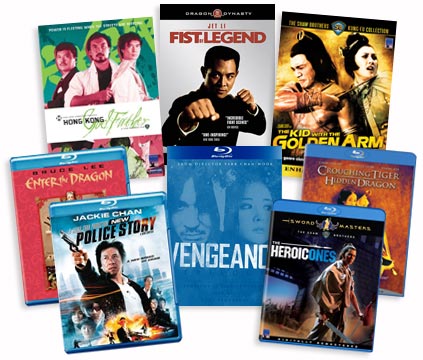
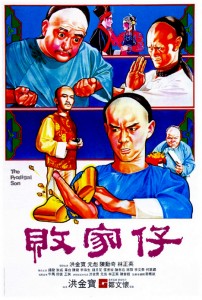
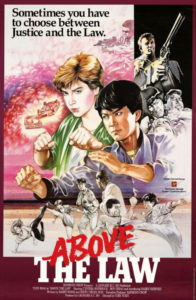
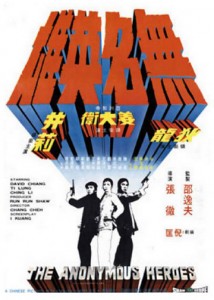

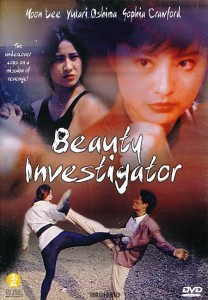
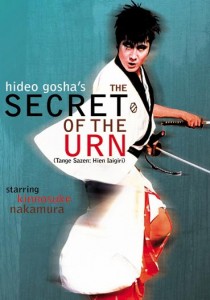



Be the 1st to Comment